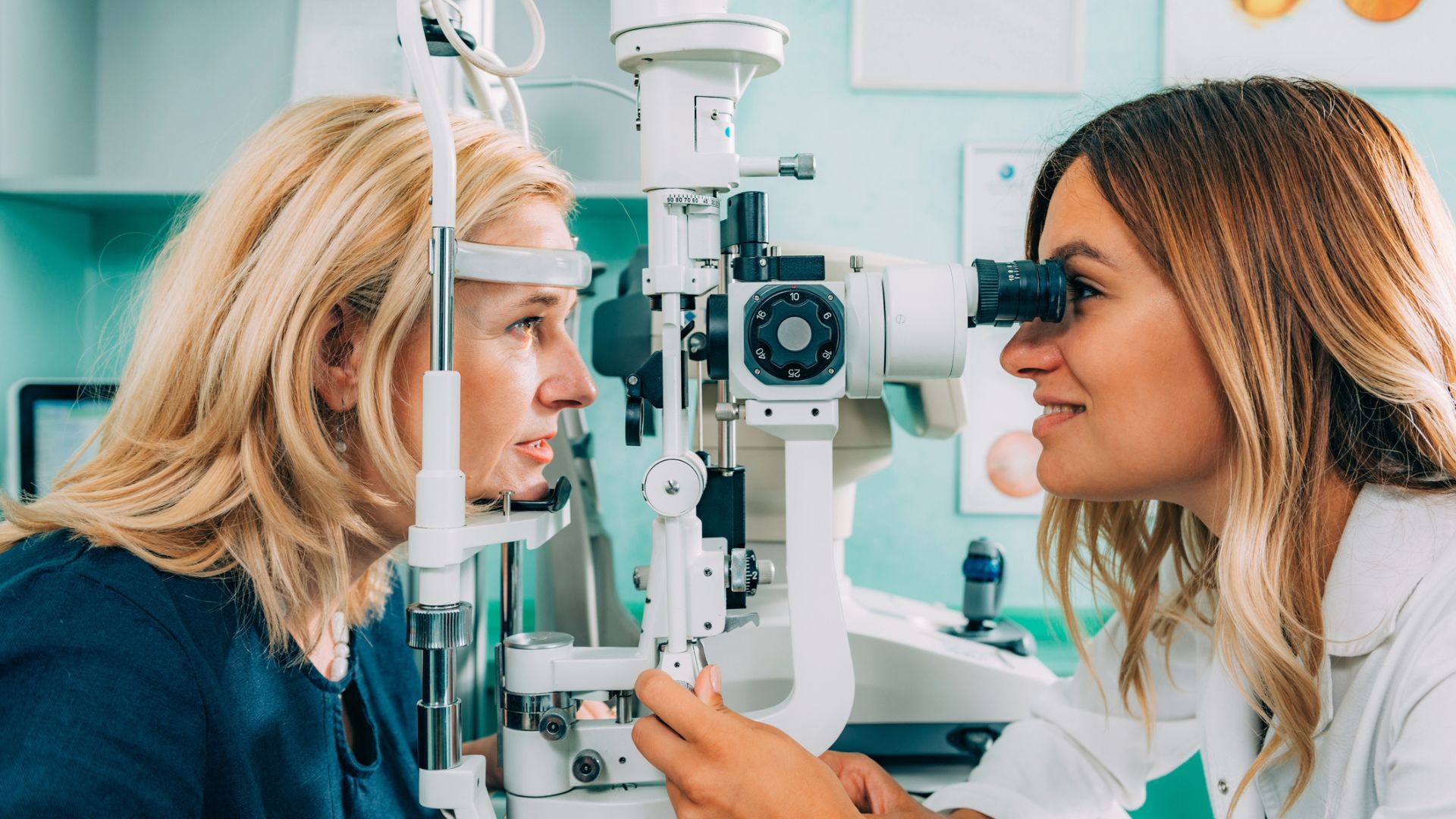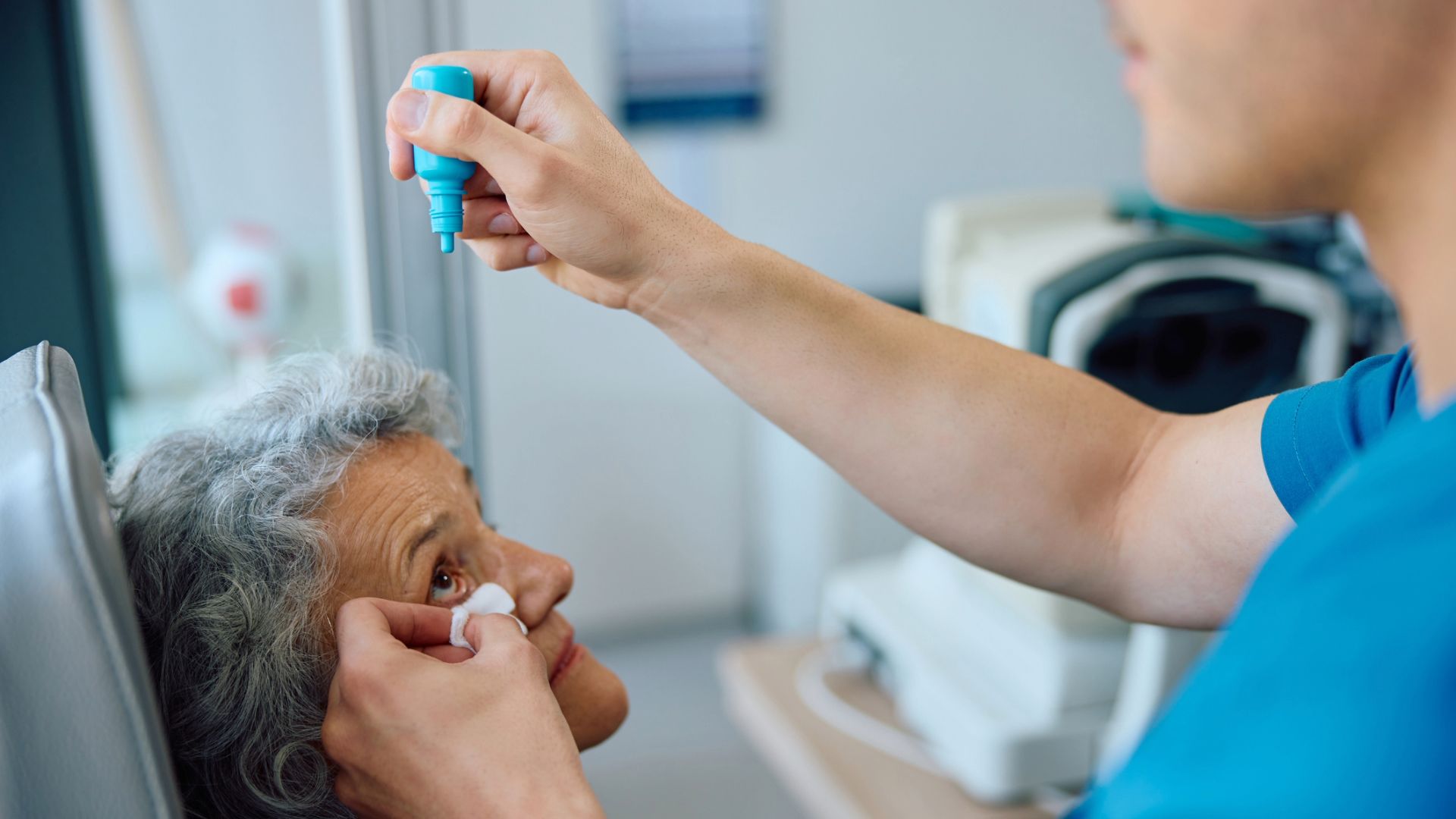Whenever a person is diagnosed with a health condition, one of the first questions they want answered is, “How do I treat it?”
Geographic atrophy is an advanced form of age-related macular degeneration (AMD), the leading cause of vision loss in older Americans.
AMD causes deterioration to the macula, a cluster of millions of light-sensitive cells located in the back of the eye. The macula is part of the retina, which converts light signals that enter through the eye’s lens into neural signals that travel to the brain. The macula is responsible for central vision. It’s what enables us to see detail when we look directly at something.
Consequently, when a person has AMD, they lose central vision. They may not be able to see fine details when looking at an object or may have difficulty reading. In advanced stages, vision loss can be significant.
Geographic atrophy is a type of advanced-stage AMD. It occurs when areas of the retina deteriorate and die. These dead areas will no longer work, causing permanent vision loss in that specific part of the eye.
When a person with geographic atrophy is reading, words or letters may appear to be missing. When they look at someone’s face, features or a portion of the face may be missing. Over time, the atrophy can expand, making these areas larger and causing further vision loss.
There is no cure for geographic atrophy and there are currently no approved drug treatments (although there are numerous in development). However, there are therapies and strategies that may help people with geographic atrophy.
Treating AMD
Treatment for AMD will be a part of treatment for geographic atrophy. AMD is a progressive condition, meaning that it typically will get worse with time (especially when left untreated or undertreated).
A healthcare provider may prescribe treatments for AMD, to prevent it from getting worse and contributing to further vision loss. The treatment will depend on whether a person has dry AMD or wet AMD.
- Dry AMD. Nutritional supplements (called AERDS supplements) may be prescribed. These can help slow the progression of dry AMD, which is the gradual thinning of the macula and the formation of fatty deposits (called drusen) under the retina.
- Wet AMD. This advanced stage of AMD causes new blood vessels to form inside the macula. The blood vessels do not function well, and leak blood and fluid that can cause rapid progression of vision loss. It can be treated with anti-VEGF injections, a medicine that slows and stops blood vessels from forming. It can also be treated with a type of laser surgery called photodynamic therapy.
Healthy lifestyle habits like eating a nutritious diet, staying physically active, quitting smoking (if you smoke), and managing other existing health conditions (like high blood pressure and diabetes) may also help slow the progression of AMD.
While these therapies may help delay the progression of AMD, they cannot heal any areas of the eye affected by geographic atrophy.
Vision rehabilitation
One of the most difficult aspects of living with vision loss is the loss of independence—when everyday tasks become difficult, you may find yourself relying on others for help.
Vision rehabilitation involves finding strategies for maximizing the vision you do have. It can help you find new ways to complete everyday tasks and can help you remain as independent as possible.
Your healthcare providers may also be able to provide assistance devices or recommend strategies that can help—eyeglasses and magnifiers, devices with large text or text-to-speech functions, brighter lighting inside your home.
Implantable miniature telescope (IMT)
This is a surgical treatment available to some people with end-stage AMD. A device called an implantable miniature telescope (IMT) is surgically inserted into one eye. This device can improve central vision. It is currently approved for select people with end-stage AMD who are over the age of 75.
Clinical trials
As mentioned above, there are currently no approved treatments available for geographic atrophy, but there are treatments in development. These include numerous drugs, as well as gene therapies and cell-based therapies.
It may be worth talking to your healthcare providers about clinical trials, which could offer access to treatments not yet available. Participating in a clinical trial also means contributing to research about geographic atrophy, which may lead to treatments that help other people with the disease.






